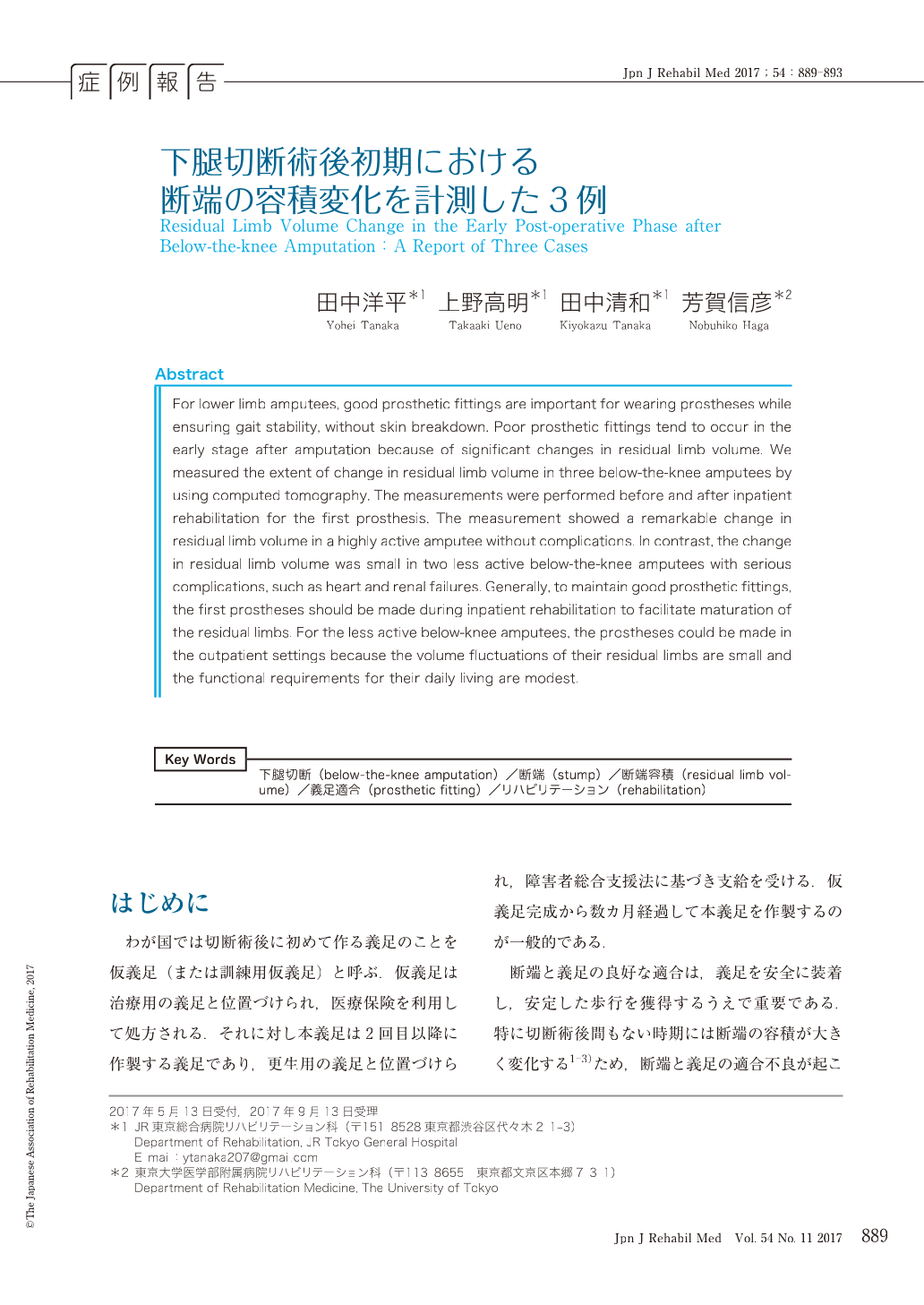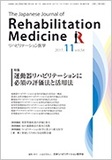Japanese
English
- 販売していません
- Abstract 文献概要
- 1ページ目 Look Inside
- 参考文献 Reference
はじめに
わが国では切断術後に初めて作る義足のことを仮義足(または訓練用仮義足)と呼ぶ.仮義足は治療用の義足と位置づけられ,医療保険を利用して処方される.それに対し本義足は2回目以降に作製する義足であり,更生用の義足と位置づけられ,障害者総合支援法に基づき支給を受ける.仮義足完成から数カ月経過して本義足を作製するのが一般的である.
断端と義足の良好な適合は,義足を安全に装着し,安定した歩行を獲得するうえで重要である.特に切断術後間もない時期には断端の容積が大きく変化する1-3)ため,断端と義足の適合不良が起こりやすい.そのため,仮義足を処方するまでの間にできるだけ断端が成熟し,断端の容積が小さくなっていることが望ましい.
断端容積の計測法として,水置換法,表面の計測による容積推計,接触式プローブ,光学式走査,超音波,CT,レーザースキャニング,MRI,生体インピーダンスを用いたものなどの報告が過去にある3).その中で,CTを用いた方法が正確であるとされている3).しかし,CTを用いて同一患者における断端の容積変化を検討した報告はほとんどない.
われわれは下腿切断者3例において,回復期リハビリテーション病棟での入院リハビリテーション前後で断端容積がどの程度変化するか,CTを用いて計測した(図1).その結果を示すとともに,仮義足作製のタイミングや入院リハビリテーションの適応と必要性について考察した.
本報告では活動度をKレベルにより分類した.Kレベルはアメリカ合衆国の公的医療保険制度であるメディケアにおいて使われている移動能力を分類する指標である4-6).活動度に応じてK0からK4までの5段階で評価する.K0レベルが歩行不能,K1レベルが自宅内のみ歩行可能(超低活動),K2レベルが何らかの制限を伴うが屋外歩行可能(低活動),K3レベルが制限なしで屋外歩行可能(中活動),K4レベルがアスリートなど高い活動レベル(高活動)である.
なお,対象者には本報告の趣旨や内容についての説明を行い,情報公開についての承諾を得た.
For lower limb amputees, good prosthetic fittings are important for wearing prostheses while ensuring gait stability, without skin breakdown. Poor prosthetic fittings tend to occur in the early stage after amputation because of significant changes in residual limb volume. We measured the extent of change in residual limb volume in three below-the-knee amputees by using computed tomography. The measurements were performed before and after inpatient rehabilitation for the first prosthesis. The measurement showed a remarkable change in residual limb volume in a highly active amputee without complications. In contrast, the change in residual limb volume was small in two less active below-the-knee amputees with serious complications, such as heart and renal failures. Generally, to maintain good prosthetic fittings, the first prostheses should be made during inpatient rehabilitation to facilitate maturation of the residual limbs. For the less active below-knee amputees, the prostheses could be made in the outpatient settings because the volume fluctuations of their residual limbs are small and the functional requirements for their daily living are modest.

Copyright © 2017, The Japanese Association of Rehabilitation Medicine. All rights reserved.


